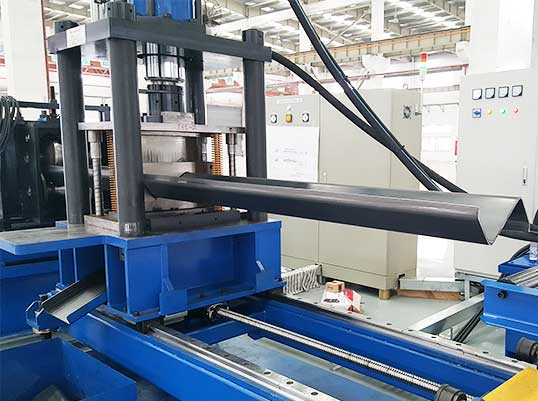Navigation Menu
Contact Us
- Email:
- info@wxavatar.com
- Address:
- Yurong Village, Yuqi Street, Huishan District, Wuxi, China.
Release Date:May 16, 2025 Visit:46 Source:Roll Forming Machine Factory
When you look at modern solar panel installations, you might notice the metal frames holding everything together. These mounting structures are increasingly made using solar stand roll forming machines, but not every factory has adopted this technology yet. Let's explore why this advanced equipment isn't everywhere and what factors influence a manufacturer's decision to use it.

Understanding Solar Stand Roll Forming Machines
A solar stand roll forming machine is specialized equipment that shapes metal coils into precise profiles needed for solar mounting systems. These machines continuously bend metal through a series of rollers to create uniform components with consistent quality. The technology offers several advantages for producing solar racking parts like rails, legs, and clamps.
Reasons Some Factories Hesitate to Adopt Roll Forming Tech
1. Initial Investment Considerations
The upfront cost of a high-quality solar stand roll forming machine can be significant for smaller manufacturers. While the long-term benefits often justify the expense, some factories may need to carefully evaluate their financial capacity before committing to this equipment.
2. Production Volume Factors
Roll forming machines excel at medium to high-volume production. Factories with smaller order quantities or highly customized projects might find traditional fabrication methods more flexible for their current needs. The break-even point where roll forming becomes cost-effective varies by operation.
3. Technical Expertise Requirements
Operating a roll forming machine effectively requires specific knowledge and skills. Some manufacturers may need time to train staff or hire specialists before they can fully utilize this technology. The learning curve can be a temporary barrier to adoption.
4. Space and Facility Limitations
These machines often require substantial floor space and proper facility setup. Older factories or those in space-constrained locations might need to make physical adjustments to accommodate roll forming equipment, adding to the transition costs.
5. Material Considerations
While roll forming works well with many metals used in solar mounts, some specialized materials or unusual thicknesses might require alternative processing methods. Factories working with niche materials may have valid reasons for not switching entirely to roll forming.
The Benefits Driving Adoption
Despite these considerations, more solar mount manufacturers are implementing roll forming technology because of its advantages:
Consistent product quality with tight tolerances
Efficient material usage with less waste
Faster production speeds for high-volume orders
Ability to create complex profiles in a single process
Lower labor requirements per unit produced
Future Outlook for Roll Forming in Solar Manufacturing
As solar energy continues to expand globally, demand for mounting systems is growing. This increased scale makes roll forming technology more attractive to manufacturers. We're seeing more factories gradually adopt this equipment as their order volumes justify the investment and as they gain confidence in operating the machines effectively.
The decision to implement solar stand roll forming technology involves careful consideration of a factory's specific circumstances. While the benefits are clear for many operations, factors like production scale, financial resources, and technical capabilities all play important roles in the adoption timeline. As the solar industry matures and standardizes, roll forming will likely become more prevalent in solar mount manufacturing.

For factories considering this transition, the key is to evaluate their unique situation and plan accordingly. Many find that starting with simpler profiles and gradually expanding their roll forming capabilities makes the transition more manageable while still capturing the technology's benefits.